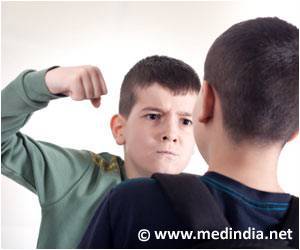Victims of multiple bias-based bullying had the worst outcomes in three areas: fear of being harmed, school avoidance, and negative effects on their physical, psychological and academic well-being,

‘Bias-based bullying is when children are bullied because of some aspect of their social identity, whether that's race, gender, ethnicity, religion, disability or sexual orientation. ’





"We wanted to know whether the effects of bullying varied depending on why a child was bullied," says Elan Hope, an assistant professor of psychology at NC State and a co-author of the paper. "Specifically, we wanted to know if outcomes differed when kids are targeted because of social biases." The researchers looked at data on 678 students between the ages of 12 and 18 from around the country. The data stem from the School Crime Supplement to the Department of Justice's 2015 National Crime Victimization Survey. Four hundred and eighty seven of the students reported generalized bullying. One hundred and seventeen students reported experiencing one type of bias-based bullying, with gender, race and disability being the most common categories targeted. Sixty-four students reported multiple bias-based bullying, with race and ethnicity being the most commonly targeted categories.
The researchers evaluated a suite of adverse outcomes, as well as protective factors that may help mitigate those outcomes.
"Victims of one type of bias-based bullying fared second worst. Victims of generalized bullying still suffered adverse outcomes, but to a lesser extent than the other two groups," Mulvey says. The researchers also found that the effectiveness of protective factors also varied across the groups.
For example, social support from teachers, family, community members and peers did nothing to help victims of bias-based or multiple bias-based bullying - though it did help victims of generalized bullying. And school safety and security measures did not alleviate adverse outcomes for victims of multiple bias-based bullying - but did mitigate harms for victims of single bias-based bullying and generalized bullying.
Advertisement
Source-Eurekalert









